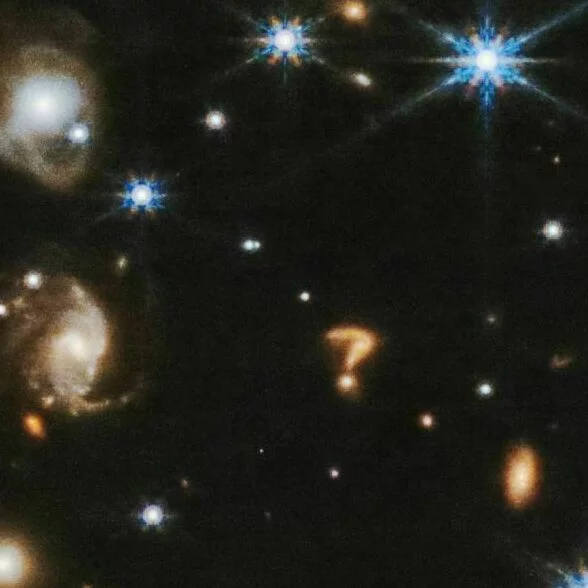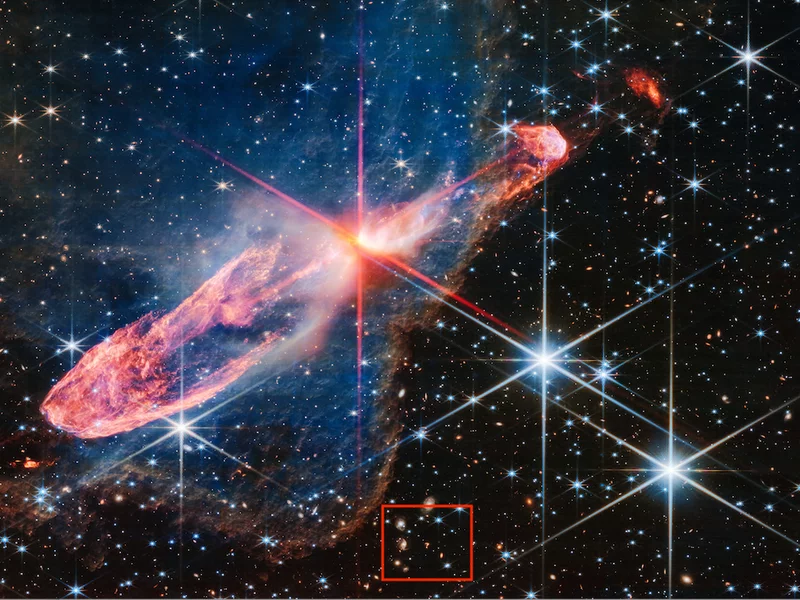
The James Webb Space Telescope recently shared a breathtaking image of two actively forming stars. But amazing as the foreground itself may be, people’s attention was drawn to the background where a “question mark” structure stuck out like a sore thumb (if you zoomed in enough).
The uncanny orange structure is no easter egg or hoax pulled by astronomers to incite people on the internet. Nevertheless, the memes must flow.
“No big deal. That part of space just hasn’t rendered yet,” said Reddit user horrus70.
“The aliens know we’ve found them and now they’re just messing with us,” quipped another Redditor.
This viral image, a composite of six infrared images, immediately made the rounds on social media platforms like X (formerly Twitter) and Reddit. Despite the buzz, the European Space Agency insists it is real.
What’s going on here?

So, what is this enigmatic object exactly? Scientists speculate that the question mark could be two or more galaxies merging, a process where galaxies collide and morph into new forms. The upper curve of the question mark resembles a distorted spiral galaxy, potentially in the midst of merging with another galaxy.
While the true nature of this object remains uncertain due to its distance, the shape’s curve likely originates from the galaxies’ tidal interaction, while the dot might be a smaller spherical galaxy.
Despite their common occurrence in the cosmos, galaxy mergers aren’t often observed. It’s worth mentioning that the perception of a question mark shape is attributed to the specific angle at which the galaxies encountered each other and our viewpoint from Earth. If you would view this from some other spot in the Milky Way, the cosmic structure could look very different.
Concerning the centerpiece of the original broad picture shared by the James Webb team, it showcases a tightly bound pair of young stars known as Herbig-Haro 46/47, surrounded by a disc of gas and dust. What sets Herbig-Haro 46/47 apart is its age: it’s merely a few thousand years old.
While scientists weren’t all that impressed by the “question mark” structure, they find Herbig-Haro 46/47 a lot more intriguing. Given stars‘ usual million-year formation span, this rarity offers researchers a unique chance to witness mass accumulation in the early stages.






